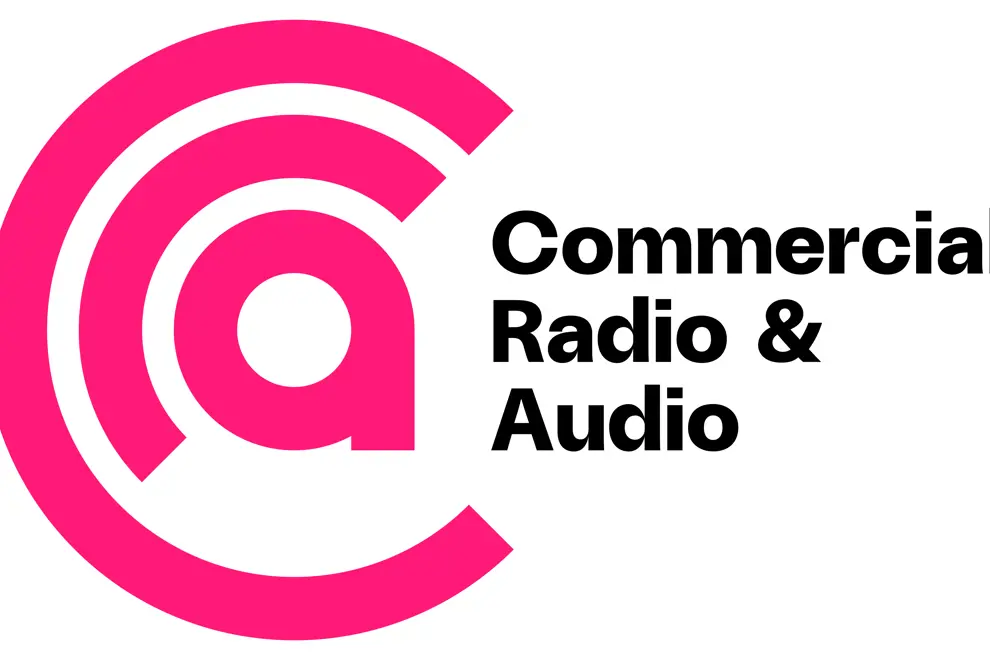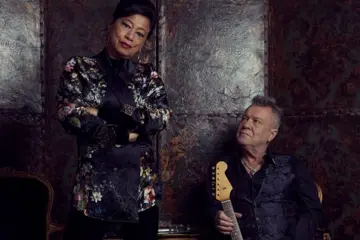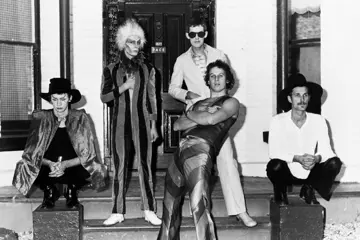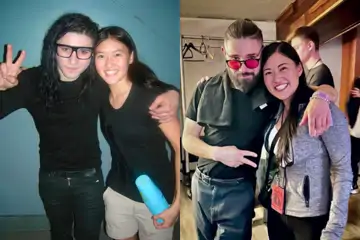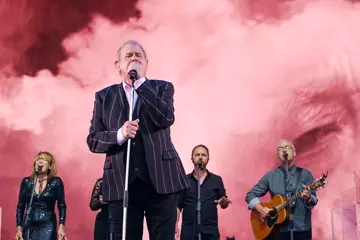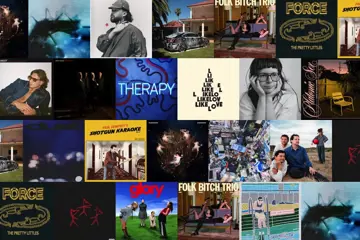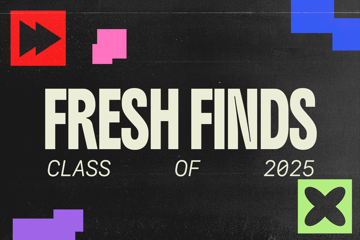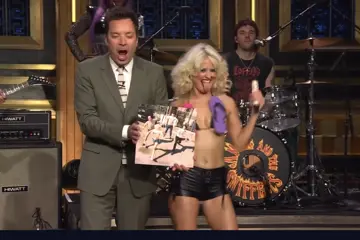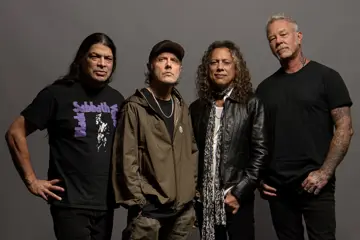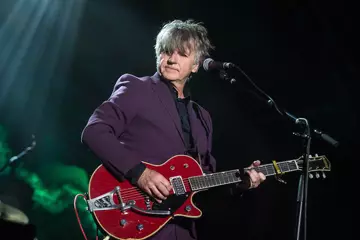Australia’s commercial radio has a ready made answer for its detractors accusing it of heading for the scrapyard.
It argues it remains the most powerful of audio formats even with the switch over to podcasts.
It also insists it retains a powerful role with music fans, as a place where they find new content, have an intimate relationship with the medium, and with a loyalty to presenters who seemingly have an immense presence in their lives.
The phrase “power of audio” is a tagline for its latest campaign to get brands to advertise.
Certainly statistics from commercial radio during the winter of 2025 show that listenership continues to grow, in all age groups, and in different areas.
In June, Edison Research published its The Infinite Dial Australia 2025, showing the sector was reaching 15 million people weekly, “four times more than ad-supported Spotify”.
One in three Australians aged 25–54 stream radio weekly, with half of Australians consuming podcasts monthly.
"With one in three Australians aged 25–54 now streaming radio weekly, up 6.5% since last year, and half of Australians consuming podcasts monthly, the message is loud and clear: audio delivers scale, impact and connection and gives audiences what they want, when they want, however they want it."
This was according to Lizzie Young, CEO of the trade body Commercial Radio & Audio.
Edison President Larry Rosin added the report “highlights radio's strong appeal across all age groups even as so many other options proliferate. Commercial radio delivers the most reach among all audio options for Australian advertisers."
Total radio remains the top choice for in-car audio, with 84% of Australians 18+ who travelled in a car in the past month tuning in while on the road.
The report noted that the format's digital evolution was clear, more than one in four Australians stream radio in their cars, “demonstrating how audiences are embracing new ways to access their favourite content.”
Also strengthening audience connection was that four in ten Australian households own smart speakers. These voice-enabled devices further embed audio into daily routines and drive more frequent and spontaneous listening occasions, especially for radio and short-form content.
"For advertisers, audio connects brands across the entire customer journey whether it’s trusted scale for brand awareness, precision targeting, or influencing highly engaged audiences - audio's versatility makes it the most effective and essential medium in any media strategy," Young said at the time.
Extinguish Fire?
Is audio so powerful it can extinguish fire and ignite emotion in you?
That’s the theme of CRA’s bold Power Of Audio campaign, launched this week, via a partnership between independent agency Thinkerbell, sonic specialists MassiveMusic and art collective Glue Society.
What’s more, it can be proven, said Young. “This campaign doesn’t just talk about the power of audio, it proves it in the real world.
“We’ve applied System1’s creative principles and partnered with Thinkerbell to bring that strategy to life through a bold and emotive execution that conveys the effectiveness of audio in driving business outcomes.”
System1 was founded in 2000 by its President John Kearon and has operations in Europe, North America, Brazil, Singapore and Australia.
Its latest research found a concept called “creative fluency” where “ads that forge emotional connections, are memorable, and unmistakably tied to a brand through effective sonic branding.” This can be highly effective in getting results from branding.
Andrew Tindall, its Senior Vice President of Global Partnerships, explained, “Last year academic Mark Ritson showed that allocating just 11% of a media budget to radio can double campaign business effects.
“(But) System1’s (new) findings reveal how marketers can now double that double.”
He added: “We all know radio is an affordable vehicle for mass reach with high attention, signalling strength and the ability to build brand awareness.”
So far its analysis of 56 Australian audio campaigns with over 8,000 Aussie listeners only had 68% recall, and hence there was a great opportunity for brands to be more effective.
To do that, System1 explained ads had to have strong branding to be remembered, have something interesting to say, and will be discussed with the listener’s social circles if they leave them “feeling positive.”
They will also be remembered if they are entertaining – with “right-brain” creative features such as Character, Story, Dramatic Pauses, Humour and Music.
Adam Ferrier, founder & Chief Thinker at Thinkerbell, stated: “By using a sub-bass frequency to extinguish a flame, we wanted to prove just how potent audio can be.
“Audio’s often treated like the side dish in campaigns, but when you isolate it and make it the hero, it becomes undeniable. This is proof that a good frequency can spark culture, shift mood, and even kill a flame. That’s power.”
While Power Of Audio is obviously directed at the ad world, commercial radio’s recent statistics showed how the medium continued to have a “power” impact on listening despite steep competition from streaming platforms.
Audience Growth
Results of GfK Survey 4 in July 2025 showed radio growth in Australia hit six-digit figures.
Weekly listenership showed 111,000 new listeners from the year before.
The biggest momentum was from in-car listening. This represented four million weekly listeners with 191,000 extra listeners year-on-year.
Time spent listening (TSL) saw audiences tuning in for an average of 11 hours 49 minutes weekly, with workplace listening leading the way at 12 hours 41 minutes per week.
Commercial radio streaming audiences remained strong at 3.3 million weekly.
The 10–24s increased TSL to 3 hours and 17 minutes. The 25—54 demo, which represents 1.6 million streaming listeners, with TSL averaging 3 hours and 22 minutes weekly. Streaming outside of home/car/work rose by 25,000 listeners to 795,000.
Research by Creative Australia however put radio as representing only 25%. In comparison, a very high 98% of those in its survey turned to streaming platforms.
Of others, 66% relied on social media for discovery, with live events at 62% and music festivals at 58%.
These exceeded TikTok (53%) and Instagram (40%).
About 44% attributed finding new music to word of mouth, and a low 31% to websites such as Shazam and Bandcamp, online games and music websites/blogs.
Overseas radio has not given up on Gen Z. Marketing title Aspire by Marketon told its readers that radio was still a way to get to Gen Z. Its studies found that 75.7% of people ages 18-24 listen to radio weekly, and cite AM/FM radio as the most trustworthy platform.
Gen Z is most likely to listen to radio in the car. 89% of Gen Z radio listening occurs through a traditional receiver.
According to the report: “Radio provides them with a human connection. They find new songs by listening to radio. They use radio as a source to learn about music, artists and news. Gen Z associates radio with nostalgia and good memories.
“These are all very positive signs about how younger generations perceive radio. They often have less faith in other mediums, including social media and TV (even though) they do spend more time with these types of media.”
In Britain, there seems to be a revival of young music fans turning to traditional radio. 78% of Gen Z listens to it. They prefer it to TV as they can listen while they scroll, said research firms Nielsen and Roberts.
Stations as BBC Radio 1 are focussing in on Gen Z, with younger presenters, playlisting more new acts, and including experiences and immediate feedback in their programming.
Last year, the amount of 16-24 year old Brits watching TV in an average week fell below to the 50% mark for the first time, to 48%.
This piece of content has been assisted by the Australian Government through Music Australia and Creative Australia, its arts funding and advisory body


